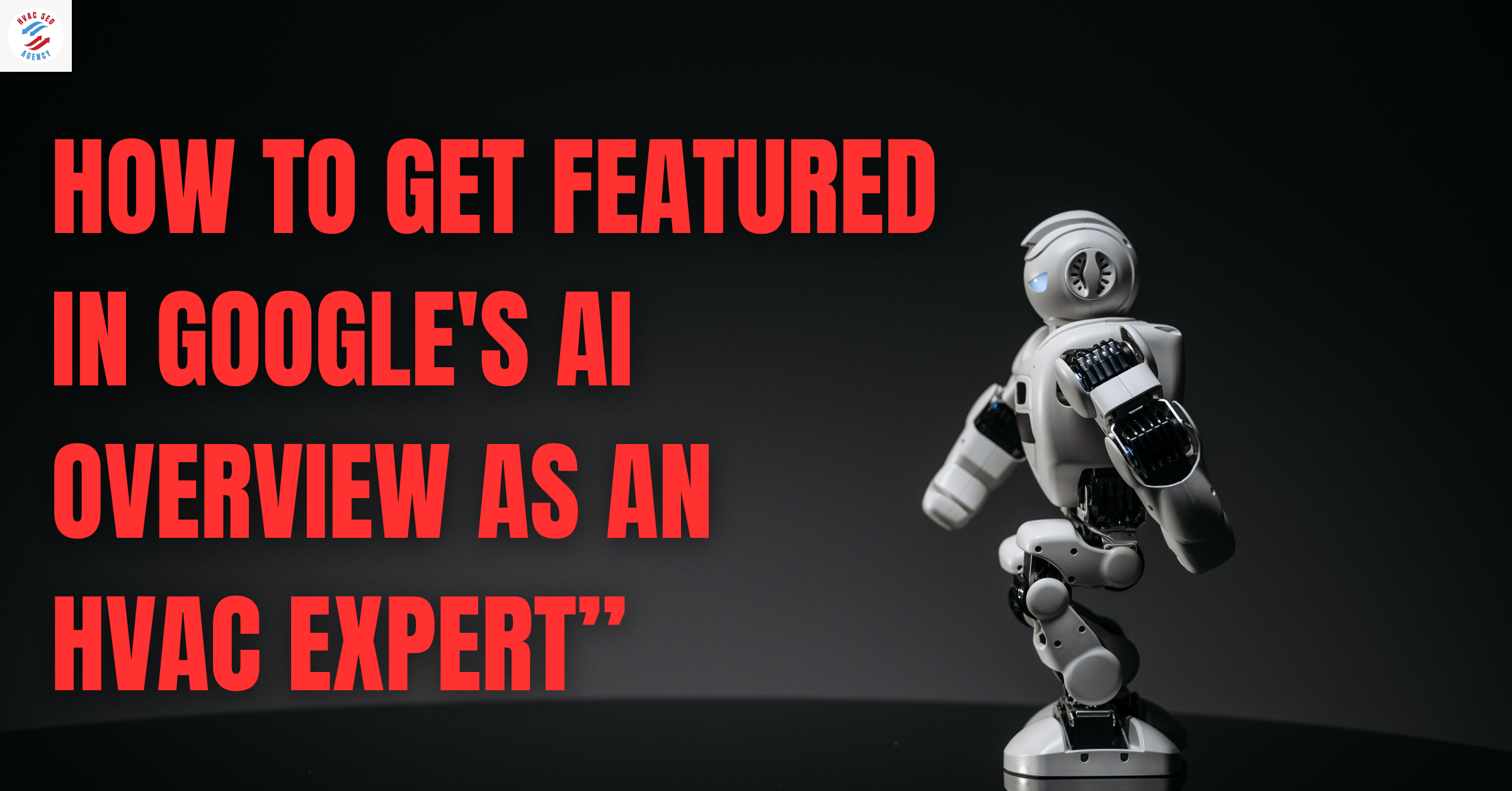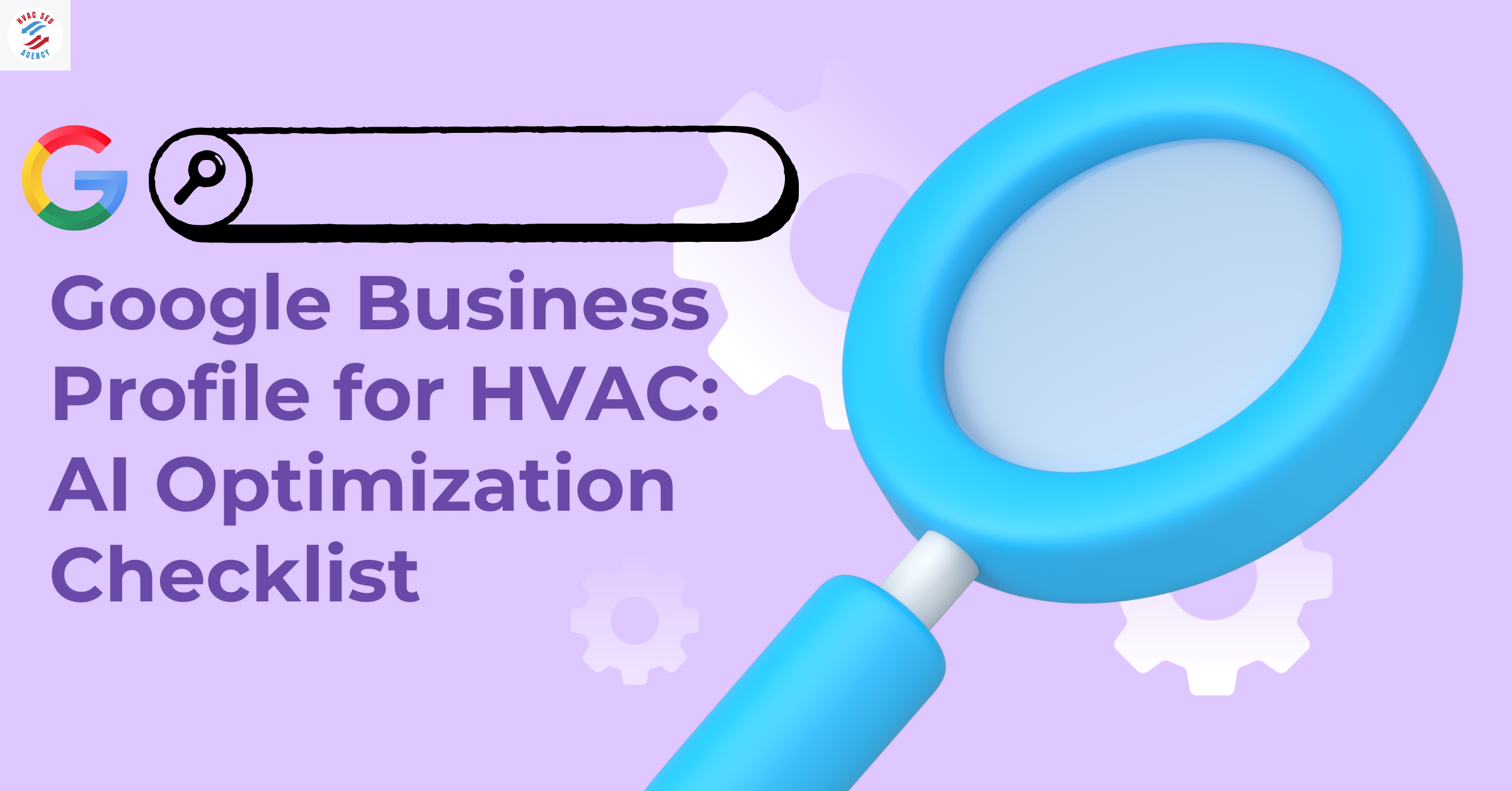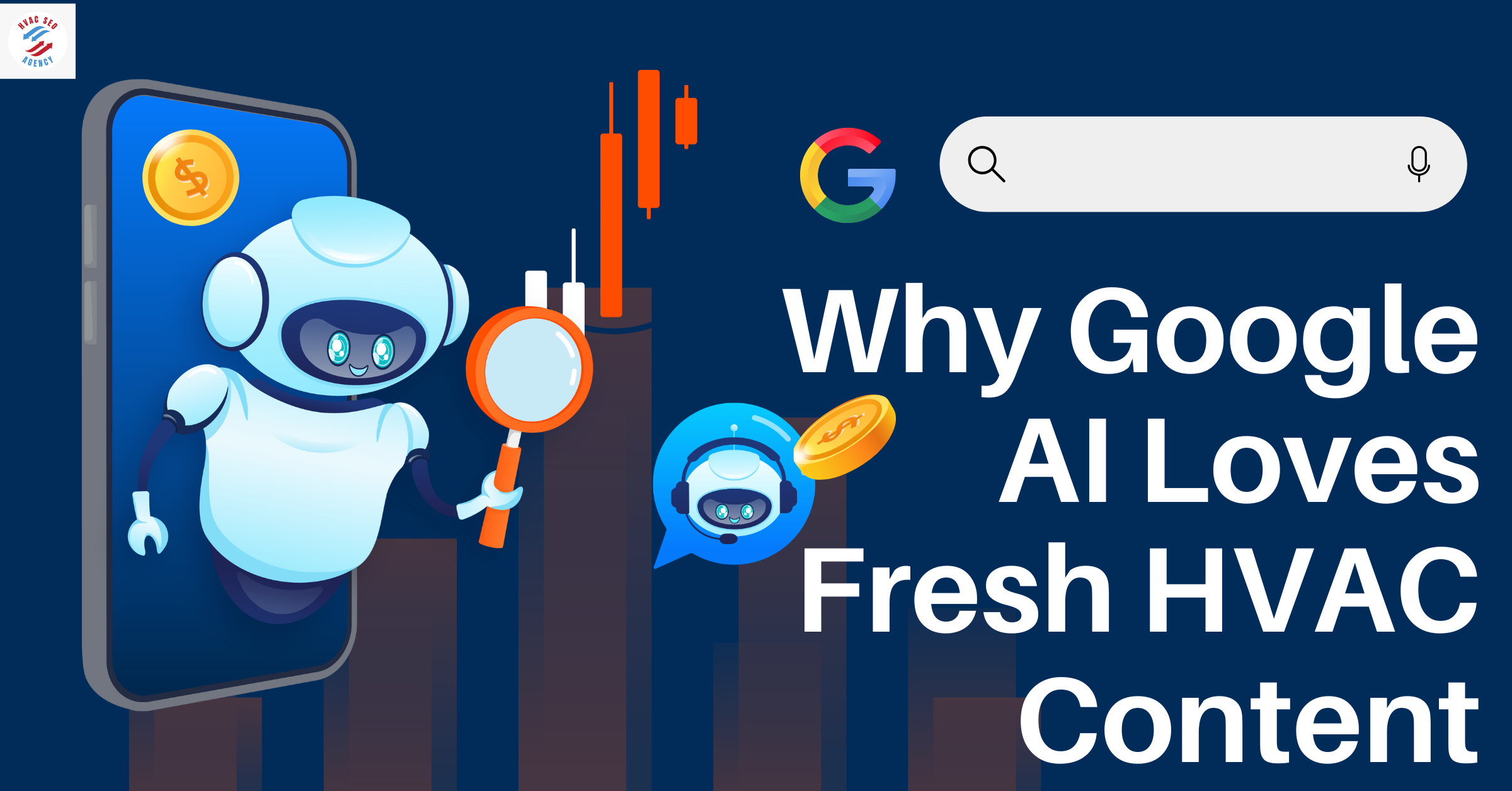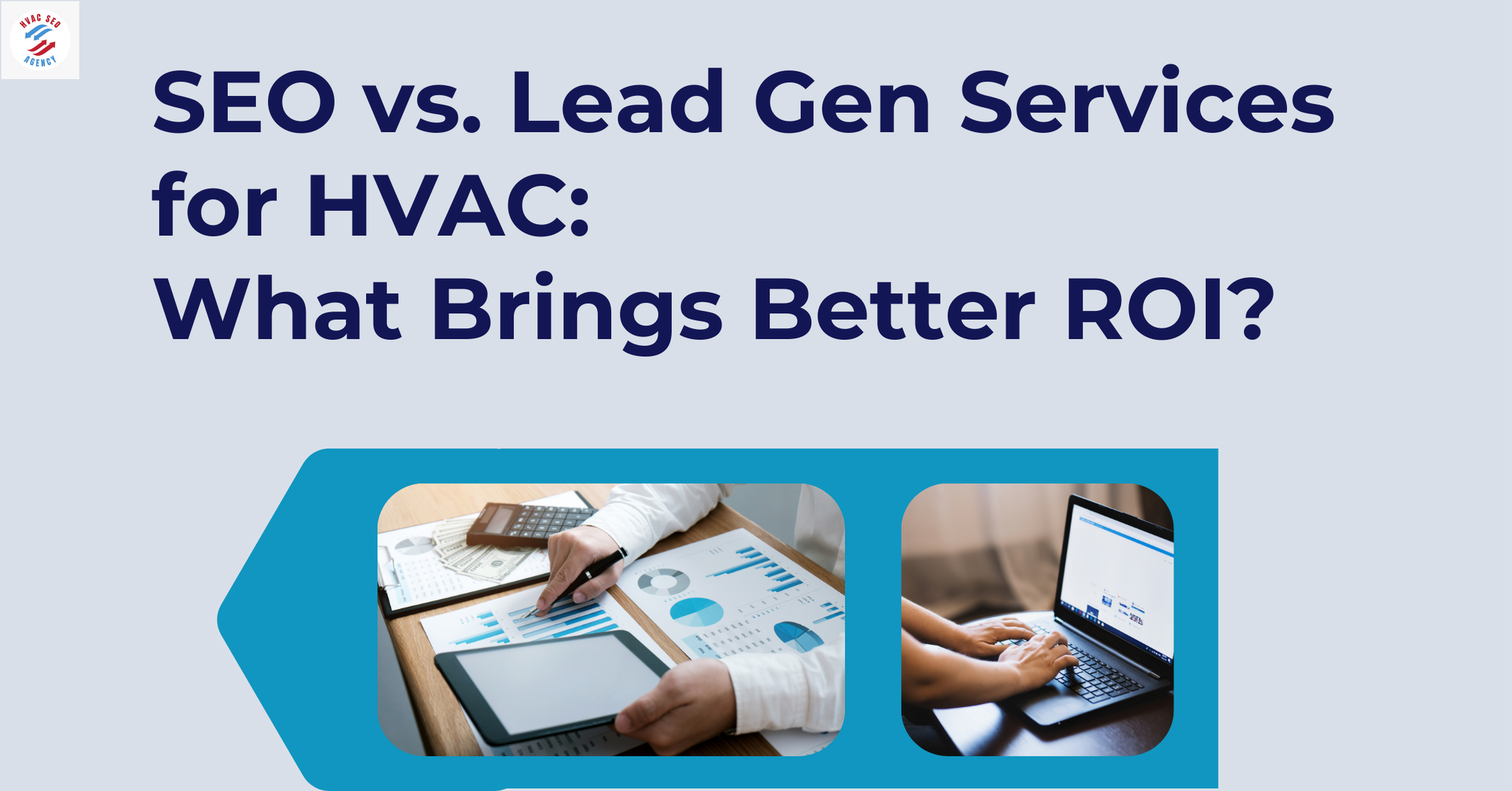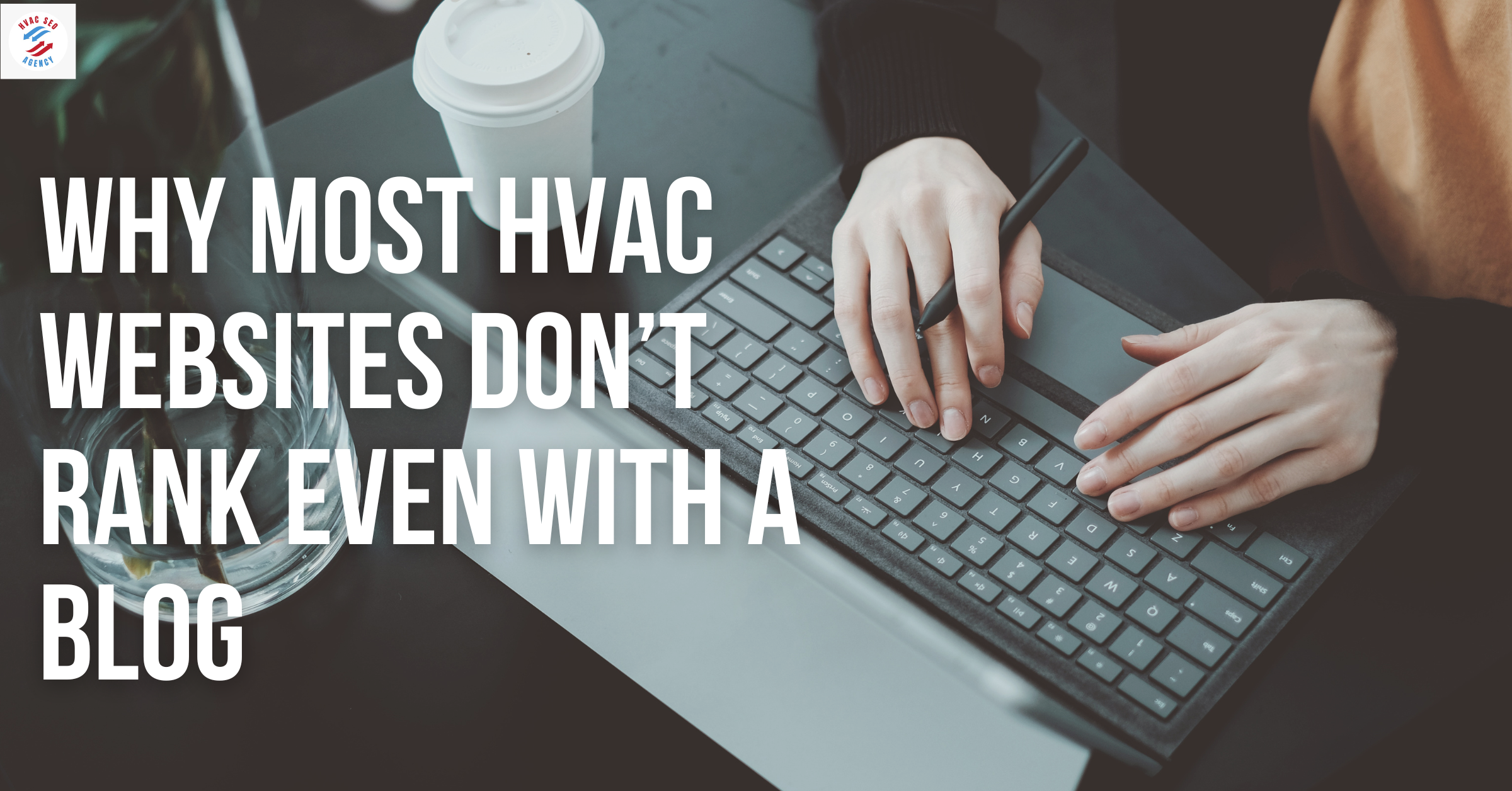Revolutionizing HVAC: The Latest Technologies Every Business Must Know

I. The Future of HVAC: Why Innovation Matters for Businesses
Heating, Ventilation, and Air Conditioning (HVAC) systems have evolved significantly, with the latest HVAC technologies reshaping the way businesses manage indoor climate control. Traditional HVAC setups are being replaced by smart HVAC systems, offering higher efficiency, automation, and sustainability. For businesses looking to stay ahead in this evolving landscape, partnering with an expert HVAC SEO agency can help increase visibility, attract customers searching for energy-efficient solutions, and drive long-term growth. But why does this innovation matter so much for businesses today?
1. Energy Efficiency & Cost Reduction: A Business Imperative
With rising operational expenses, businesses must adopt energy-efficient solutions to stay profitable. The latest HVAC technologies focus on optimizing energy consumption while maintaining comfort levels.
According to the U.S. Department of Energy, commercial buildings can reduce HVAC-related energy consumption by up to 50% by upgrading to modern, high-efficiency systems. This translates to thousands of dollars in annual savings for businesses relying on HVAC for climate control.
The Evolution of HVAC Energy Efficiency (2000-2025)
2. Indoor Air Quality (IAQ): A Game-Changer for Employee Productivity
Impact of Indoor Air Quality (IAQ) on Workplace Productivity
The Environmental Protection Agency (EPA) reports that poor indoor air quality (IAQ) can reduce workplace productivity by 10-15% and increase employee sick days. The latest HVAC technologies incorporate smart air purification, advanced ventilation systems, and HEPA filtration, improving IAQ and creating a healthier work environment.
How Better IAQ Benefits Businesses:
Reduces employee absenteeism (Fewer sick days)
Enhances concentration & cognitive function
Improves customer experience in commercial spaces
Complies with health regulations for safer work environments
3. Sustainability & Regulatory Compliance: The Need for Green HVAC Solutions
Governments worldwide are implementing strict energy regulations to promote sustainability. Businesses adopting smart HVAC systems are not only reducing carbon footprints but also becoming eligible for tax incentives and rebates.
For instance, ENERGY STAR-certified HVAC units can save businesses 20-30% in tax credits, making sustainability a cost-effective choice. HVAC SEO in dallas is also seeing a rise in local searches related to energy-efficient HVAC installations, reflecting growing demand.
II. Smart HVAC Systems: The Role of AI & IoT in Business HVAC Efficiency
Businesses are no longer just looking for heating and cooling solutions; they need intelligent, automated HVAC systems that offer efficiency, convenience, and cost savings. Enter smart HVAC systems, powered by AI (Artificial Intelligence) and IoT (Internet of Things). These innovations are revolutionizing the HVAC industry.
1. AI-Powered Climate Control: The Future of Smart HVAC Systems
Benefits of AI-Powered HVAC Systems vs. Traditional Systems
AI-based smart HVAC systems use machine learning algorithms to analyze temperature trends, detect inefficiencies, and optimize energy consumption in real time.
How AI Optimizes HVAC Operations:
Self-learning thermostats adjust temperatures based on occupancy and weather conditions.
AI-powered sensors detect potential system failures before breakdowns occur.
Automated energy-saving modes reduce HVAC operation costs by up to 30%.
For example, Google’s DeepMind AI has reduced cooling energy consumption by 40% in its data centers by utilizing AI-driven climate control.
2. IoT: Connecting HVAC Systems for Seamless Operation
IoT enables smart HVAC systems to connect to the cloud, allowing businesses to monitor and control their HVAC settings remotely via smartphones and computers. This real-time connectivity eliminates energy wastage and ensures optimal performance.
IoT-Enabled HVAC Features Businesses Love:
Remote access (Adjust HVAC settings from anywhere)
Automated diagnostics (Receive maintenance alerts before problems arise)
Customizable zoning (Different temperatures in different sections of a building)
3. Case Study: A Corporate Office Saves 40% with Smart HVAC
A New York-based tech company integrated AI-powered smart HVAC systems into its office. The result?
40% reduction in energy bills
Increased employee comfort (IAQ improved by 35%)
Faster ROI (Smart HVAC paid for itself within 4 years)
Table: Benefits of AI-Powered HVAC Systems vs. Traditional Systems
HVAC systems are no longer just about heating and cooling; businesses now demand energy efficiency, sustainability, and cost-effectiveness. The push for the latest HVAC technologies has led to the development of high-efficiency HVAC systems, designed to minimize energy consumption while maximizing performance. To capitalize on these advancements, companies should focus on Best HVAC Services to Promote During Summer, such as energy-efficient air conditioning, smart thermostats, and HVAC system tune-ups, ensuring optimal performance during peak seasonal demand.
1. Why High-Efficiency HVAC Matters for Businesses
The Cost-Effectiveness of High-Efficiency HVAC Over 10 Years
Many businesses struggle with rising energy costs, and traditional HVAC systems are among the biggest energy consumers in commercial buildings. According to the U.S. Department of Energy, HVAC systems account for nearly 40% of a building’s total energy use. Upgrading to high-efficiency HVAC systems can cut energy consumption by up to 50%, translating to significant cost savings.
Table: Energy Savings from Upgrading to High-Efficiency HVAC
2. Key Features of High-Efficiency HVAC Systems
The latest HVAC technologies focus on optimizing energy use while maintaining indoor air quality and comfort. Here are some game-changing advancements:
A. Variable Speed Compressors
Unlike traditional HVAC systems that run at full power, variable speed compressors adjust cooling and heating levels based on real-time demand. This reduces energy waste and improves efficiency by up to 30%.
B. Energy Recovery Ventilators (ERVs) & Heat Recovery Ventilators (HRVs)
ERVs and HRVs recycle indoor air energy, reducing the burden on HVAC systems. They improve ventilation, enhance IAQ, and reduce energy bills.
C. Smart Thermostats & AI Integration
Smart thermostats analyze occupancy patterns and adjust HVAC performance accordingly, preventing unnecessary energy use. AI-powered smart HVAC systems take it further by learning user preferences and optimizing efficiency automatically.
3. Comparing High-Efficiency HVAC Systems with Traditional Systems
As businesses push toward sustainability and energy efficiency, the demand for geothermal and solar-powered HVAC systems is rising. These renewable energy-powered HVAC solutions offer businesses long-term cost savings, reduced environmental impact, and energy independence.
1. What is Geothermal HVAC & How Does It Work?
Geothermal HVAC systems utilize underground temperatures to heat and cool buildings efficiently. Unlike traditional HVAC systems that generate heat or cool air, geothermal systems transfer energy from the earth.
How Geothermal HVAC Works in 4 Steps:
A ground loop absorbs underground heat in the winter and delivers it indoors.
In summer, the system removes heat from the building and transfers it underground.
A heat pump distributes warm or cool air as needed.
Minimal electricity is required, cutting down energy costs.
Table: Benefits of Geothermal HVAC Systems vs. Traditional HVAC
Solar HVAC systems use solar energy to power heating and cooling, significantly reducing reliance on grid electricity. These systems can operate through photovoltaic (PV) panels or solar thermal collectors.
Advantages of Solar HVAC:
Lower energy costs (Businesses can cut energy bills by up to 50%)
Eco-friendly and sustainable
Potential tax incentives & rebates
3. Which One is Better? Geothermal vs. Solar HVAC
A Texas-based warehouse switched to geothermal and solar-powered HVAC to reduce energy costs. The results:
50% reduction in electricity costs
80% decrease in HVAC maintenance expenses
ROI achieved within 6 years
V. HVAC Automation & Building Management Systems (BMS)
As technology evolves, businesses are integrating HVAC automation and Building Management Systems (BMS) to improve efficiency, reduce costs, and enhance comfort. These latest HVAC technologies help businesses automate climate control, optimize energy consumption, and minimize maintenance costs.
1. How Building Management Systems (BMS) Improve HVAC Efficiency
A BMS integrates HVAC, lighting, and security systems, enabling businesses to control all aspects of a building's operation from a centralized platform. This smart HVAC system helps businesses:
Monitor and adjust temperature settings remotely
Reduce energy waste by up to 30%
Receive real-time performance insights to prevent breakdowns
Lower maintenance costs through automated alerts
Table: Top Features of BMS-Integrated HVAC Systems
2. How Smart HVAC Systems Are Transforming Commercial Spaces
Modern smart HVAC systems use AI and IoT to self-adjust heating and cooling based on occupancy levels, weather forecasts, and real-time energy demand. This eliminates manual thermostat adjustments and ensures optimal comfort without energy wastage.
Case Study: How an Office Cut HVAC Costs by 35% with BMS
A Los Angeles-based corporate office implemented a BMS-integrated HVAC system with smart zoning and AI-driven adjustments. The impact:
35% reduction in HVAC energy consumption
Faster detection of system inefficiencies, reducing repair costs by 40%
Improved employee comfort and productivity
VI. Advanced Air Purification & Filtration Technologies for Businesses
In commercial spaces, indoor air quality (IAQ) plays a crucial role in employee health, customer satisfaction, and operational efficiency. Businesses are adopting the latest HVAC technologies to improve filtration, ventilation, and air purification, ensuring a healthier indoor environment. To stay competitive and attract more customers, partnering with the best HVAC SEO agency can help businesses enhance their online presence, reach clients looking for advanced IAQ solutions, and establish authority in the growing HVAC industry.
1. How Poor Indoor Air Quality Affects Businesses
The EPA reports that poor IAQ can reduce workplace productivity by 10-15% and increase employee sick days. Smart HVAC systems with advanced air purification technologies help businesses:
Eliminate airborne bacteria and viruses
Reduce allergens, dust, and pollutants
Comply with OSHA and environmental air quality regulations
Improve customer experience in retail and hospitality spaces
2. Key Air Purification Technologies in Modern HVAC Systems
A. HEPA Filtration
Captures 99.97% of airborne particles, including dust, pollen, and bacteria.
Essential for offices, hospitals, and commercial spaces.
B. UV-C Germicidal Light
Neutralizes viruses, bacteria, and mold in HVAC ductwork.
Used in schools, healthcare facilities, and retail spaces.
C. Bipolar Ionization Technology
Breaks down airborne contaminants, reducing indoor pollutants.
Ideal for airports, shopping malls, and corporate offices.
3. Smart IAQ Sensors: Real-Time Air Quality Monitoring
With the rise of AI-powered smart HVAC systems, businesses can install IAQ sensors that continuously monitor air quality and adjust ventilation rates accordingly. These sensors provide:
Real-time air quality reports
Automated HVAC adjustments for cleaner air
Alerts for high pollutant levels
Case Study: How a Restaurant Improved Customer Retention with IAQ Upgrades
A Chicago-based restaurant installed HEPA filters and UV-C purification in its HVAC system. The impact:
Customer complaints about air quality reduced by 60%
Health inspection scores improved
Higher customer retention and satisfaction
VII. VRF (Variable Refrigerant Flow) Systems: A Game-Changer for Commercial Spaces
For businesses seeking energy efficiency, flexibility, and superior climate control, Variable Refrigerant Flow (VRF) systems have emerged as a top solution. Unlike traditional HVAC units, VRF systems precisely control refrigerant flow to different zones within a building, allowing for customized temperature settings and improved efficiency.
1. What Are VRF Systems and How Do They Work?
The ROI of Switching to VRF Systems
A VRF HVAC system is designed to deliver varying amounts of refrigerant to multiple indoor units, enabling independent climate control for different areas. This makes smart HVAC systems more adaptable, reducing energy waste and enhancing comfort levels.
How VRF Systems Work in Commercial Buildings:
Variable-speed compressors adjust refrigerant flow based on demand.
Multiple indoor units allow for zoned temperature control.
Heat recovery VRF systems can simultaneously heat and cool different zones.
Smart HVAC systems automatically detect occupancy and adjust settings accordingly.
Table: VRF Systems vs. Traditional Split HVAC Systems
2. Benefits of VRF Systems for Businesses
1. Zoned Comfort Control
VRF systems allow different areas of a building to be heated or cooled separately, ensuring maximum efficiency and comfort.
2. Lower Operating Costs
Businesses using VRF-based smart HVAC systems report 50-60% reductions in HVAC-related energy costs, making these systems cost-effective in the long run.
3. Minimal Maintenance
Unlike traditional systems, VRF HVAC systems require fewer repairs and reduced maintenance costs, thanks to automated diagnostics and smart monitoring.
3. Case Study: How a Retail Store Reduced HVAC Costs by 50%
A Boston-based department store switched to a VRF HVAC system to improve climate control and reduce energy bills. Results:
50% energy savings within the first year
Improved comfort for customers and employees
ROI achieved in just 4 years
VIII. Heat Recovery Ventilation (HRV) & Energy Recovery Ventilation (ERV) for Maximum Efficiency
For businesses looking to improve energy efficiency while maintaining indoor air quality, HRV (Heat Recovery Ventilation) and ERV (Energy Recovery Ventilation) systems are essential upgrades. These latest HVAC technologies recycle heat and moisture, reducing the strain on HVAC systems while ensuring a healthy indoor environment.
1. What Are HRV and ERV Systems?
Heat Recovery Ventilation (HRV):
Transfers heat between incoming and outgoing air streams without mixing them.
Preheats incoming air in winter and pre-cool it in summer, reducing HVAC workload.
Energy Recovery Ventilation (ERV):
Similar to HRV but also transfers moisture, balancing indoor humidity levels.
Ideal for high-humidity climates, reducing excessive HVAC operation.
Table: When to Choose HRV vs. ERV for Your Business
2. How Businesses Benefit from HRV & ERV Systems
Lower HVAC Load: HRV and ERV systems reduce heating and cooling demands, cutting energy bills by up to 50%.
Improved Indoor Air Quality: Removes pollutants, allergens, and CO2, ensuring a healthier work environment.
Regulatory Compliance: Many building codes now require energy-efficient ventilation systems, making HRV and ERV necessary upgrades.
3. Case Study: An Office Building Achieves 30% HVAC Energy Savings
A San Francisco-based office building installed an ERV system to balance indoor humidity levels and improve ventilation. The results:
30% energy savings on HVAC operation
Improved employee productivity due to better indoor air quality
ROI achieved within 5 years
Create a Profitable HVAC Business Plan in 2025
To thrive in 2025, HVAC companies must implement a well-structured business plan that integrates SEO and innovative technology. Key aspects to consider:
Market Research: Understand the latest HVAC industry trends and customer demands.
Financial Planning: Budget for equipment, marketing, and staffing needs.
SEO & Digital Marketing: Invest in HVAC SEO marketing to attract more customers.
Sustainability & Energy Efficiency: Leverage HRV and ERV systems to reduce costs and comply with regulations.
IX. The Role of Data Analytics in HVAC Performance & Maintenance
With businesses becoming more data-driven, the latest HVAC technologies are integrating advanced data analytics to optimize performance and maintenance. Companies that rely on smart HVAC systems can leverage real-time data to reduce energy waste, predict equipment failures, and enhance operational efficiency.
1. How Data Analytics Improves HVAC Efficiency
The Role of Data Analytics in HVAC Performance & Maintenance
Modern HVAC systems generate vast amounts of data, including temperature fluctuations, energy consumption patterns, and air quality metrics. Using AI-powered analytics, businesses can:
Detects inefficiencies in real-time, preventing costly repairs.
Predict maintenance needs before a breakdown occurs, reducing downtime.
Optimize energy usage, cutting costs by up to 40%.
Analyze HVAC trends to adjust settings automatically for maximum efficiency.
Table: Benefits of HVAC Data Analytics for Businesses
2. AI-Driven HVAC Diagnostics: Reducing Repair Costs & Downtime
Traditional HVAC maintenance follows a reactive approach, meaning repairs occur only after an issue arises. Smart HVAC systems equipped with AI-powered analytics detect minor inefficiencies before they escalate into major problems, allowing businesses to:
Reduce emergency repair costs by 30-50%.
Extend HVAC system lifespan through proactive maintenance.
Avoid sudden equipment failures, preventing business disruptions.
Case Study: How a Hospital Reduced HVAC Downtime by 50%
A Dallas-based healthcare facility integrated AI-driven HVAC analytics, leading to:
50% reduction in downtime due to predictive maintenance.
30% savings in HVAC repair costs.
Improved indoor air quality, benefiting patients and staff.
X. Government Regulations & Incentives for Advanced HVAC Adoption
As the push for energy efficiency and sustainability increases, governments worldwide are introducing regulations and financial incentives to encourage businesses to adopt the latest HVAC technologies. These smart HVAC systems not only improve building efficiency but also help businesses take advantage of tax credits, rebates, and compliance benefits.
1. Key HVAC Energy Efficiency Regulations for Businesses
Government agencies like the U.S. Department of Energy (DOE) and the Environmental Protection Agency (EPA) have set stringent regulations to promote high-efficiency HVAC systems.
Important Regulations Impacting HVAC Upgrades:
SEER2 Standards – Minimum efficiency ratings for HVAC units must be higher than previous standards.
ASHRAE 90.1 Compliance – Commercial buildings must meet energy performance benchmarks.
EPA Refrigerant Rules – Phasing out harmful refrigerants to ensure environmental sustainability.
Table: Top 5 HVAC Tax Credits & Incentives for Businesses (2024)
Cost vs. Savings for Businesses Using HVAC Incentives
A. Cost Savings on Upgrades
By leveraging tax credits and rebates, businesses can reduce upfront HVAC upgrade costs by up to 50%.
B. Compliance with Energy Laws
Non-compliance with HVAC energy standards can result in fines and increased operational costs. Upgrading to smart HVAC systems ensures compliance with all legal requirements.
C. Environmental Sustainability Goals
Many businesses aim to meet corporate social responsibility (CSR) and ESG (Environmental, Social, and Governance) targets. The latest HVAC technologies align with sustainability initiatives, helping companies reduce their carbon footprint.
3. Case Study: A Manufacturing Facility Saves $500,000 Through HVAC Incentives
A Florida-based manufacturing plant upgraded to high-efficiency HVAC units while utilizing state and federal tax credits. The impact:
$500,000 in savings through tax incentives.
Energy consumption was reduced by 40%.
Achieved compliance with federal energy laws.
XI. Future Trends in HVAC Technology: What Businesses Should Prepare For
The HVAC industry is evolving rapidly, with new innovations transforming how businesses manage heating, cooling, and ventilation. As businesses strive for cost efficiency, energy conservation, and sustainability, adopting the latest HVAC technologies is no longer optional—it’s essential.
1. AI-Driven HVAC Systems: The Next Leap in Smart HVAC
Artificial Intelligence (AI) is becoming an integral part of smart HVAC systems, allowing businesses to:
Automate climate control based on real-time occupancy and weather patterns.
Predict maintenance needs, reducing breakdowns and repair costs.
Enhance energy efficiency, cutting operational costs by up to 40%.
Table: AI in HVAC – Benefits for Businesses
With growing environmental concerns, governments are phasing out high-global-warming-potential (GWP) refrigerants in favor of low-GWP alternatives.
Hydrofluoroolefins (HFOs): These next-gen refrigerants reduce carbon emissions by up to 80% compared to traditional coolants.
Natural Refrigerants (CO₂, Ammonia, Propane): Used in industrial and commercial HVAC applications, offering higher energy efficiency.
3. Blockchain Technology in HVAC Data Security & Energy Tracking
Blockchain is entering the HVAC space by offering secure energy tracking and tamper-proof data storage. It ensures:
Transparent energy consumption records.
Secure HVAC system monitoring, preventing cyber threats.
Automated HVAC performance tracking, improving efficiency.
Case Study: How AI-Enabled HVAC Systems Improved Efficiency for a Hotel Chain
A major U.S. hotel chain adopted AI-driven smart HVAC systems, leading to:
35% reduction in heating and cooling costs.
Automated maintenance scheduling, lowering repair expenses.
Enhanced guest comfort through adaptive climate control.
XII. FAQs
1. How is HVAC technology evolving for businesses?
The latest HVAC technologies include AI-driven smart HVAC systems, high-efficiency heat pumps, and energy-saving VRF technology. These systems optimize performance, reduce costs, and improve indoor air quality.
2. What is the latest trend in HVAC technology?
AI-powered HVAC automation, geothermal heating and cooling, and eco-friendly refrigerants are some of the latest trends. Smart HVAC systems now integrate IoT sensors and predictive maintenance, enhancing operational efficiency.
3. How do smart HVAC systems save businesses money?
AI-powered climate control cuts heating and cooling costs by up to 40%.
Predictive maintenance reduces breakdowns, lowering repair costs by 35%.
Energy-efficient HVAC units qualify for tax incentives, reducing capital expenditure.
4. Are high-efficiency HVAC systems worth the investment?
Yes! Businesses investing in high-efficiency HVAC systems save 30-50% on energy bills, enjoy longer equipment lifespan, and qualify for federal tax credits.
5. What incentives are available for upgrading to smart HVAC?
ENERGY STAR Tax Credit (Up to 30% rebate on high-efficiency HVAC units).
Federal & state-level rebates for energy-efficient upgrades.
Local utility company incentives for commercial HVAC efficiency improvements.
6. How do geothermal HVAC systems work for businesses?
Geothermal systems utilize underground temperatures to heat and cool buildings efficiently, reducing energy consumption by 40-60%.
7. Why should businesses invest in AI-powered HVAC systems?
AI-driven HVAC solutions offer:
Automated climate adjustments based on real-time data.
Lower operational costs and higher energy savings.
Remote monitoring & control, ensuring peak performance.
Conclusion: The Future of HVAC is Smart, Sustainable, and Cost-Effective
The HVAC industry is undergoing a transformation, with the latest HVAC technologies offering smart automation, energy efficiency, and sustainability. Businesses that embrace AI-powered smart HVAC systems, geothermal heating, solar-powered HVAC, and VRF technology will benefit from lower operational costs, improved indoor air quality, and regulatory compliance.
As climate change and energy efficiency regulations become stricter, companies must future-proof their HVAC infrastructure. Investing in high-efficiency HVAC systems, leveraging predictive maintenance, and adopting eco-friendly refrigerants will not only cut costs but also enhance workplace productivity.


